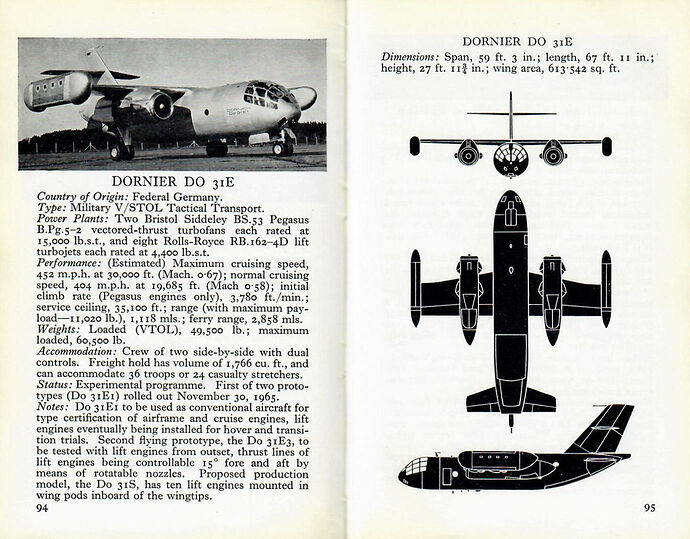Two examples of the three made of the Do 31 flew, the Do 31E1, which was used to certify the aircraft for normal flight but was incapable of VTOL, and the Do 31E3, which was capable of VTOL. The version shown in the dev stream was the E3.
This version has a long and robust probe sticking out of the nose. It’s common for prototype aircraft to have additional instruments mounted to booms projecting from the front of the aircraft; though they don’t usually have mounts as spectacularly solid as the probe we see here.
I can think of three explanations for why this probe might be as it is:
it provided relatively delicate test instruments with protection from jetwash;
it provided a visual reference for test pilots who would not know how far they could trust the new, elaborate and at that point experimental stability system;
it contained sensors necessary for that system to operate.
I don’t know which of these three explanations is correct, or whether there might be another one (if anyone does know the true explanation, I’d love to hear it).
What I am absolutely sure of is that the probe completely ruins the appearance of the aircraft, and as far as I can judge, drawings of production versions of the aircraft never showed it.
So I would really appreciate it if Inibuilds would give us - even if only in exterior view - a version of the Do 31 lacking the probe.
Incidentally, here’s a description of the Dornier Do 31E from The Observer’s Book of Aircraft, 1967 Edition:
The photo is of the E1, the three-view drawing does not show the probe. The accompanying article describes the proposed production version - which would have had ten lift engines - as the Do 31S, to which designator Google can find me no other reference.
Edit: this YouTube video explains that the probe was used for gathering test data only and would not have been present on production aircraft. The explanation is at 3:20, but if you care enough to look at that then you probably want to watch the whole thing:
Just to be clear, I’m not asking for the probe to be removed from the prototype - it clearly belongs there. But I wouldn’t mind a second version that does have the probe removed - surely that would involve minimal work - which would look a bit more like a production version, even if functionally it’s the same as the prototype.

